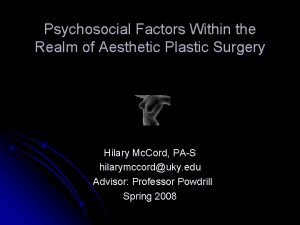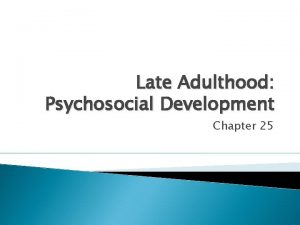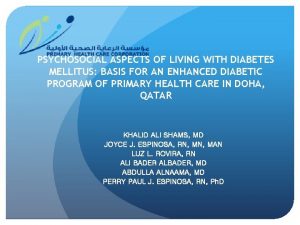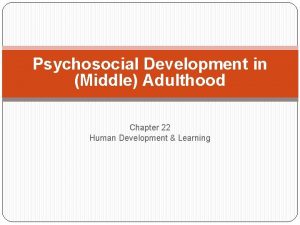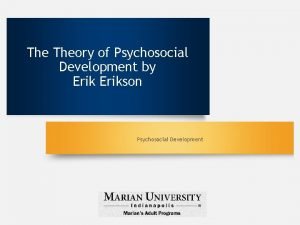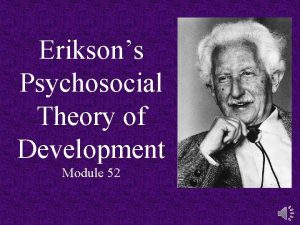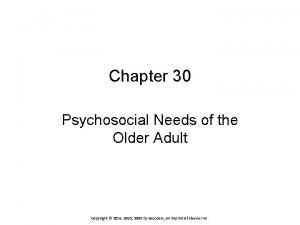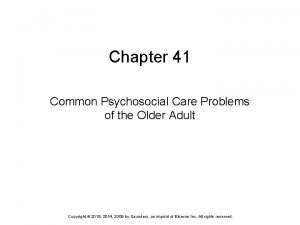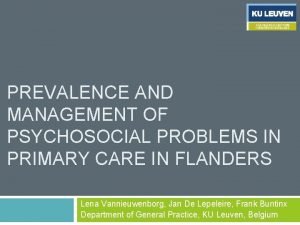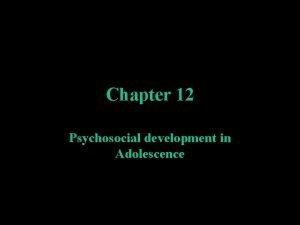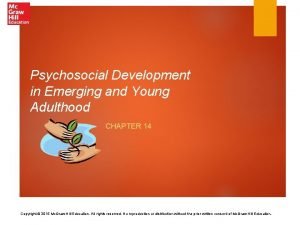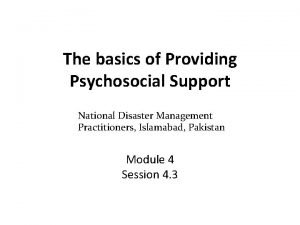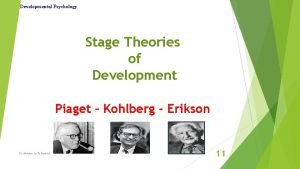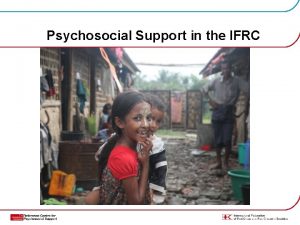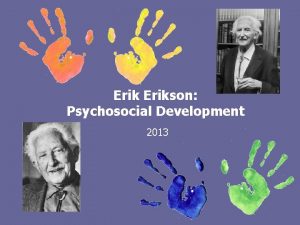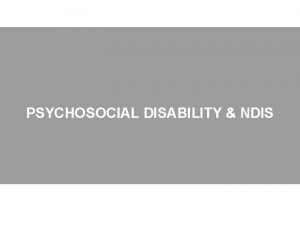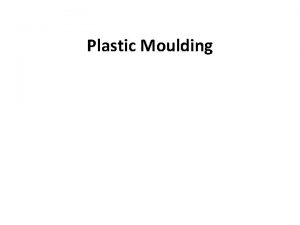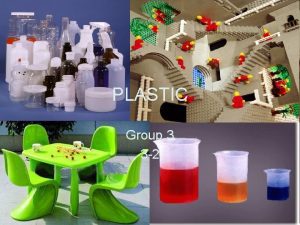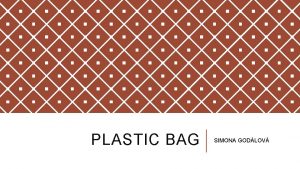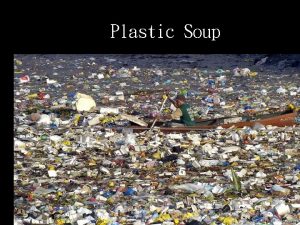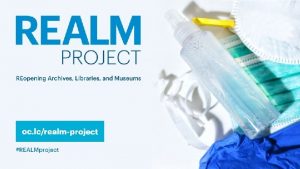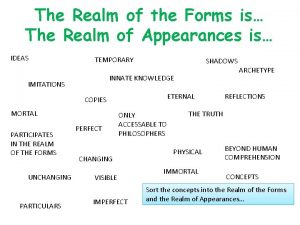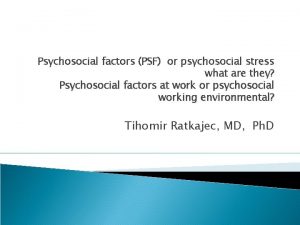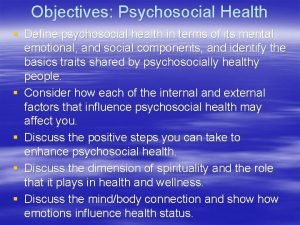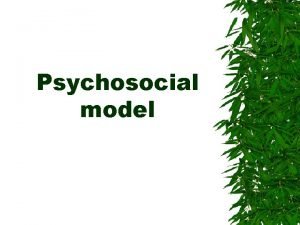Psychosocial Factors Within the Realm of Aesthetic Plastic

























- Slides: 25

Psychosocial Factors Within the Realm of Aesthetic Plastic Surgery Hilary Mc. Cord, PA-S hilarymccord@uky. edu Advisor: Professor Powdrill Spring 2008

My Audience Plastic Surgery l Psychiatry l Dermatology l Primary Care l

Growth of the Industry American Society of Plastic Surgeons reports ~ 11 million aesthetic procedures were performed in 2006. NONSURGICAL Botox Restylane Microdermabrasion SURGICAL Breast Augmentation #1 Rhinoplasty Liposuction


Breast Augmentation #1 330, 000 in 2006 l 55% increase since 2000 l Expected to increase in the future due to the FDA reapproval of silicone implants l Invention of the “Gummy Bear” implant l

Growth of the industry: Why? l Sociocultural theories emphasize the interaction of the mass media and cultural ideas of beauty with notions of Self-Ideal Discrepancy and Social Comparison Theory.

Growth of the Industry: Why? The most recent example of mass media influence is the explosion of aesthetic surgery Reality T. V. l l l Extreme Makeover (ABC) The Swan (FOX) I Want a Famous Face (MTV) l l l Plastic Surgery: Before and After (TLC) Miami Slice (Bravo) Dr. 90210 (E!)

Influence of Reality T. V. l Crockett (2007) concludes 4 out of 5 patients reported plastic surgery Reality T. V. directly influenced them to pursue an elective cosmetic procedure. l Didie (2003) reports 70% of cosmetic breast augmentation patients studied, endorsed T. V. as a significant source of knowledge for the procedure.

Influence of Reality T. V. In 2005, the American Medical Association issued an amendment to its constitution and bylaws addressing concerns arising from reality television programs’ influence on patient expectations regarding medical care and standards to guide physicians’ participation in such programs

Breast Augmentation Psychiatric Disorders: yet, another prevalent factor: l Sarwer (2003) reports 40% of women seeking breast augmentation were under the care of a mental health provider. l Meningaud (2001) similar results l

Assessment of the Breast Augmentation Candidate: the PA’s Role Identify the motivating factors for the intervention and expectations of the surgical outcome l Recognize Body Dysmorphic Disorder and consult with Mental Health Services l Elicit a psychiatric history to determine risk for post-operative suicide l

Identify Motivating Factors to have Breast Augmentation l Body Image Dissatisfaction may be the primary motivational factor (Cash 1996)

Identify Motivating Factors to have Breast Augmentation Valence is the measure of the importance of body image to a person’s self-esteem. l Value is the degree of dissatisfaction with one’s appearance. l Breast augmentation patients have high valence and high value. (Sarwer, 1998 b) l

Body Dysmorphic Disorder DSM-IV (ICD-10: F 45. 2) l Extreme body image dissatisfaction l A psychiatric illness of perceived ugliness l Absolute contraindication for breast augmentation or any cosmetic surgery l Avoid litigation l

Body Dysmorphic Disorder: Recognize It and Consult Mental Health Frequent mirror gazing l Perform repetitive time consuming behaviors regarding the imagined defect l “Doll-like” appearance l Extreme rituals of camouflage l Surgery Junky l

Body Dysmorphic Disorder: Recognize It and Consult Mental Health 15% of cosmetic surgery patients l 2% general population l 57% of BDD patients attempt suicide l Patient’s treatment of choice: mo’ surgery l Psychiatrist’s treatment of choice: SSRIs and Cognitive Behavioral Therapy l

Post-operative Suicide: the importance of a psychiatric history l Six international epidemiological studies have found an unexpected relationship between cosmetic breast augmentation and suicide l (Brinton, 2001) (Koot, 2003) (Pukkala, 2003) (Jacobson, 2004) (Brinton, 2006) (Villeneuve, 2006). l Designed to investigate overall mortality in women who underwent breast augmentation.

Death by suicide associated with: l l l Breast augmentation vs. other forms of cosmetic surgery Older age at implantation >40 years old Women who had their implants for longer periods of time History of psychiatric hospitalization with breast augmentation vs. other forms of plastic surgery Suicide rate approximately twice that expected from estimates of the general population.

Conclusion The aesthetic plastic surgery PA: must be aware of the influence television and western culture has on a patient’s desire to invasively alter their appearance l has the duty to ameliorate the patient’s body dissatisfaction with surgical intervention while providing info on benefits and risks of the procedure. l

Conclusion The aesthetic plastic surgery PA: should decide the appropriateness for surgery on a case-by-case basis and include collaboration with Mental Health l should consider results of existing studies on suicide’s link to breast augmentation. l

Conclusion The plastic surgery physician assistant has the right to refuse a surgical intervention if it is perceived as causing future harm to the patient l PRIMUM NON NOCERE l

For Fun Association of Plastic Surgery Physician Assistants www. apspa. net l BDD VIDEO http: //www. youtube. com/watch? v=Kfcohe w. REYc l Reality TV and Cosmetic Surgery VIDEO http: //www. msnbc. msn. com/id/20068105/ l

References l l l American Medical Association, Council on Ethical and Judicial Affairs, Ethics of physician participation in reality television for entertainment (Resolution 607, I-04). Nov 23, 2005, http: //www. ama-assn. org, accessed on 3/1/2008. American Psychiatric Association. Diagnostic and Statistical Manual of Mental Disorders fourth edition. 2000. American Society of Plastic Surgeons, National plastic surgery procedural statistics for 2006 (Press Release). March 23, 2007, http: // www. plasticsurgery. org, accessed on 3/1/2008. American Society of Plastic Surgeons, New reality television programs create unhealthy, unrealistic expectations of plastic surgery (Press Release). March 30, 2004, http: // www. plasticsurgery. org, accessed on 3/1/2008. Brinton, L. , et. al. Mortality among augmentation mammoplasty patients. 2001; Epidemiology 12: 321 -326. Brinton, L. , et. al. Mortality among augmentation mammoplasty patients: an update. 2006; Epidemiology 17: 162 -169. Cash, T. , et. al. Development of the Appearance Schemas Inventory: a new cognitive body-image assessment. 1996; Cognitive Therapy and Research 20: 37 -50. Castle, D. , et. al. The outcome of cosmetic surgery in psychosocial terms. 2002; MJA 176: 601 -604.

References l l l l l Crerand, C. , et. al. Body dysmorphic syndrome and cosmetic surgery. 2006; Plastic and Reconstructive Surgery 118: 167 -180. Crerand, C. , et. al. Psychological considerations in cosmetic breast augmentation. 2007; Plastic Surgical Nursing 27: 146 -154. Crockett, R. , et. al. The influence of plastic surgery reality television on cosmetic surgery patient expectations and decision making. 2007; Plastic and Reconstructive Surgery 120: 316324. Didie, E. , et. al. Factors which influence the decision to undergo cosmetic breast augmentation. 2003; Journal of Women’s Health 12: 241 -253. Festinger, L. A theory of social comparison processes. 1954; Human Relations 7: 117 - 140. Harth, W. , et. al. Psychosomatic disturbances and cosmetic surgery. 2007; Journal of the German Society of Dermatology 5: 736 -743. Higgins, E. Self-discrepancy: a theory relating self and affect. 1987; Psychological Review 94: 319 -340. Hodgkinson, D. Identifying the body dysmorphic patient in aesthetic surgery. 2005; Aesthetic Plastic Surgery 29: 503 -509. Hollander, E. , et. al. Comorbid social anxiety and body dysmorphic: managing the complicated patient. 1999; J Clin Psych 60: 27 -31. Honigman, R. , et. al. A review of psychosocial outcomes for patients seeking cosmetic surgery. 2004; Plastic Reconstructive Surgery 113: 1229 -1237.

References l l l l l l l Jacobson, P. , et. al. Mortality among Canadian women with cosmetic breast implants. 2006; Am J Epidemiology 164: 334 -341. Koot, V. , et. al. Total and cause specific mortality among Swedish women with cosmetic breast implants: a prospective study. 2003; BMJ 326: 527 -528. Meningaud, J. , et. al. Depression, anxiety, and quality of life amongst scheduled cosmetic surgery patients: multicenter prospective study. 2001; J Craniomaxillofacial Surg 29: 177 -180. Phillips, K. , et. al. Suicidality in body dysmorphic disorder: a prospective study. 2006; Am J Psychiatry 163: 12801282. Phillips, K. , et. al. Body dysmorphic syndrome: A guide for dermatologists and cosmetic surgeons. 2000; American Journal of Clinical Dermatology 1: 235 - 243. Pukkala, E. , et. al. Causes of death among Finnish women with cosmetic breast implants. 2003; Ann Plastic Surgery 51: 339 -342. Sarwer, D. , et. al. Cosmetic breast augmentation and suicide: a review of the literature. 2007; American Journal of Psychiatry 164: 1006 -1013. Sarwer, D. , et. al. Body image concerns of breast augmentation patients. 2003; Plastic Reconstr Surgery 112: 8390. Sarwer, D. , et. al. The psychology of cosmetic surgery: A review and reconceptualization. 1998; Clinical Psychology Review 18: 1 -22. Sarwer, D. , et. al. Body image dissatisfaction and body dysmorphic disorder in 100 cosmetic surgery patients. 1998; Plastic Reconstructive Surgery 101: 1644 -1649. St. John, D. Imagined ugliness: body dysmorphic disorder. 2003; Physician Assistant 27: 15 -28. Veale, D. , et. al. The psychopathology of mirror gazing in body dysmorphic disorder. 2001; Behavior Research and Therapy 39: 1381 -1393. Villeneuve, P. , et. al. Mortality among Canadian women with cosmetic breast implants. 2006; Am J Epidemiology 164: 334 -341.
 Psychosocial and aesthetic factors
Psychosocial and aesthetic factors Relaxation response technique
Relaxation response technique Psychosocial development in late adulthood
Psychosocial development in late adulthood Psychosocial aspects of living with diabetes
Psychosocial aspects of living with diabetes Middle adulthood psychosocial development
Middle adulthood psychosocial development Ego strength erikson
Ego strength erikson Trust vs mistrust
Trust vs mistrust Industry vs inferiority example
Industry vs inferiority example Psychosocial model
Psychosocial model Psychosocial needs of the elderly
Psychosocial needs of the elderly Chapter 7 human growth and development
Chapter 7 human growth and development Types of psychosocial support
Types of psychosocial support 7 psychosocial support
7 psychosocial support Common psychosocial care problems of the elderly
Common psychosocial care problems of the elderly Definition of psychosocial problems
Definition of psychosocial problems Psychosocial environment
Psychosocial environment Early adulthood stage of development
Early adulthood stage of development Psychosocial development in adolescence
Psychosocial development in adolescence Psychosocial development in early childhood
Psychosocial development in early childhood World association for psychosocial rehabilitation
World association for psychosocial rehabilitation Psychosocial development in young adulthood
Psychosocial development in young adulthood Psychosocial environment meaning
Psychosocial environment meaning Erikson's psychosocial crisis
Erikson's psychosocial crisis Types of psychosocial support
Types of psychosocial support Erikson's psychosocial theory of development
Erikson's psychosocial theory of development Psychosocial approach definition
Psychosocial approach definition
